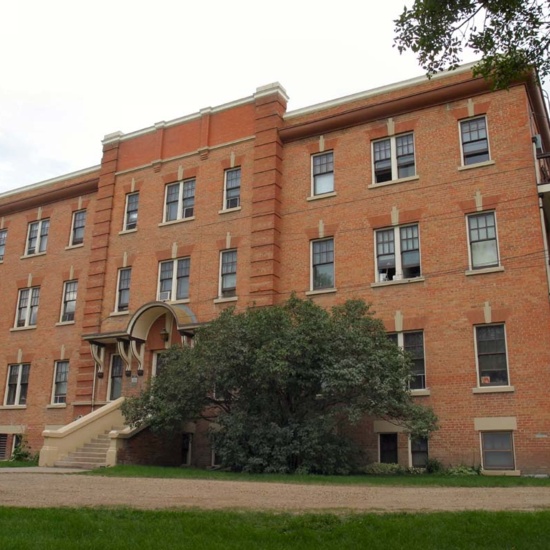Rossdale
“Within Edmonton, there are few places with as long, layered and complex a heritage as the River Crossing (Rossdale) area.” ~ City of Edmonton River Crossing Heritage Interpretive Plan.
“Within Edmonton, there are few places with as long, layered and complex a heritage as the River Crossing (Rossdale) area.” ~ City of Edmonton River Crossing Heritage Interpretive Plan.
These river flats have been a gathering place for Indigenous Peoples for thousands of years, the centre of trade, celebration, and ceremony. When Europeans wanted to trade with the Indigenous people of the area these flats were the ideal location for fur trading posts. The Hudson’s Bay Company and the North West Company both had posts on this location from 1802 to 1810, and again from 1813 to 1832. The land around these forts sustained all ethnicities, were used by all for burial grounds, and were valued as the principal transportation corridor through the region. Continuous flooding of the flats, however, forced the final Fort Edmonton to higher ground, where the Alberta Legislature Building is today.
Scotsman Donald Ross arrived in Fort Edmonton in 1872 and panned for gold in the North Saskatchewan River before running the Hudson’s Bay Company farm in 1875. That year he purchased River Lot 4 and built a home for himself at the foot of what is now McDougall Hill. It was one of the first structures outside the Fort walls. His house became a stopping place for travelers and soon became the Edmonton Hotel, the first hotel west of Portage La Prairie. The river flats, known locally as Ross Flats, became the site of some of the first homes outside the Fort and the location of some of Edmonton’s first industries: lumber yards, gold dredges, coal mines, breweries, boat building, flour mills, ice harvesting, and market gardens. Gold prospectors even stopped here for supplies for the Klondike Gold Rush in 1898. It was a natural river crossing and the landing for John Walter’s ferry, a prime location for boat traffic to land, and the site of the first bridge across the river; the first train crossed the Low Level Bridge into Edmonton in 1902.
With the arrival of the railway, the river was no longer the major transportation artery and Rossdale slowly converted to other uses. The area was a major site for local utilities. The Edmonton Electric Lighting and Power Company, run by Alex Taylor, began generating electricity from coal in Rossdale in 1902. Also part of the community were the Rossdale Power Plant, water treatment facilities, gravel pits, roads, railways, bridges, an incinerator, and, for five years starting in 1908, a funicular – the Edmonton Incline Railway. City Council even wanted to run an expressway through Rossdale in the 1970s.
The community was prime location for parkland and home to Edmonton’s first baseball and football games and even speed skating at Diamond Park. Early Fort Edmonton Journals spoke of horse races carried out here; the tradition was continued and encouraged in the late 1800s and early 1900s on lands that were also used for local agricultural and industrial exhibitions. When grandstands were built for these events Rossdale became the ideal location for thousands to gather to witness Prime Minister Sir Wilfrid Laurier declare Alberta a province in 1905. In 1914, the Hudson’s Bay Company built stables in Rossdale to shelter their horses. This was later converted to a vehicle garage. During and after the Second World War this building became the Ortona armoury, a military training and administrative facility.
The municipal community that is Rossdale was forever changed in 1915 when the highest floodwaters ever recorded on the North Saskatchewan River overflowed its banks. Some home owners and businesses never recovered from the flood. Many people, however, continued to make their homes in Rossdale. Once the site of a tent city for newcomers who came to make their living in Edmonton, Rossdale became an ethnically diverse community in the 1950s, and home to many lower-income families. Revitalization in the 1970s and 1980s led to most of the oldest structures being torn down, much to the frustration of local residents. These residents rallied again in the 1980s – successfully this time – to protest the possibility of a space sciences centre located in their community. The City has since pledged to maintain river valley communities. The River Crossing Heritage Interpretive Plan, endorsed in 2017, brings the focus of this area back to its history and significance for all the people and communities who have ever been impacted by these river flats.
Details
Sub Division Date
TBA
